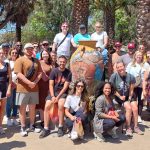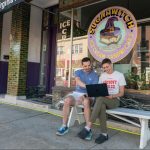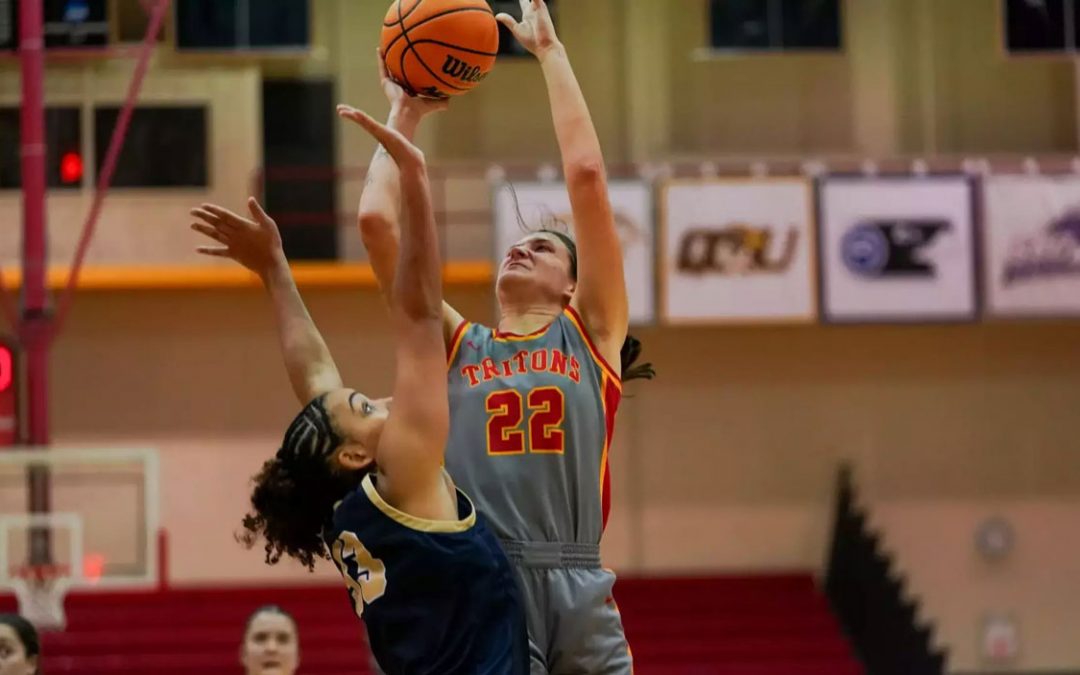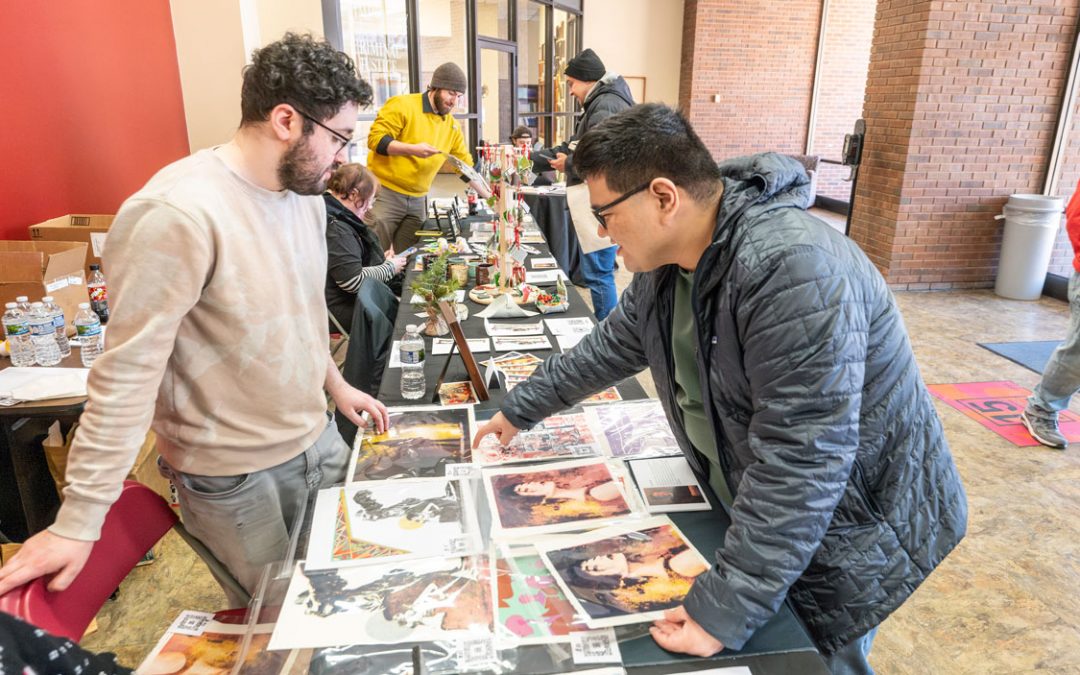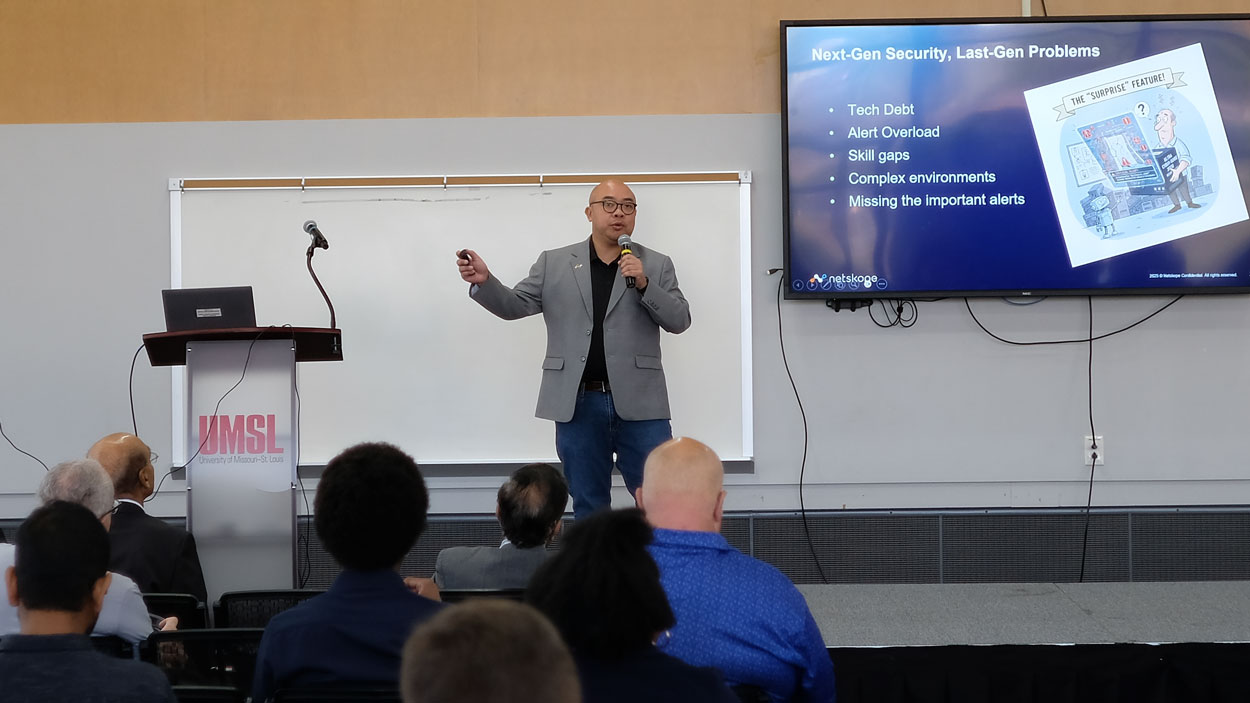
UMSL alum John Khotsyphom, now the manager of security engineering at Netskope, presents Friday morning during STLCyberCon in the ED Collabitat. Khotsyphom discussed ways his team uses artificial intelligence to make their security work more efficient. (Photos by Steve Walentik)
For more than a decade, STLCyberCon has been bringing together industry professionals, academics and students and alumni from the University of Missouri–St. Louis to network and discuss new developments in cybersecurity.
“Academics get to learn about what’s new in practice, and practitioners get to see what academic research looks like,” said Professor Dinesh Mirchandani, who has been part of the organizing committee since the conference’s founding. “The research poster presentations give students the opportunity to share the work that they are doing with a wide audience. It features a job fair. There’s something for everyone.
“There are very few conferences like STLCyberCon anywhere in the country, especially when you consider that it is free. It is a community conference and is really a place where everyone is welcome.”
More than 150 attendees turned out for the conference’s 11th edition Friday morning in the ED Collabitat on South Campus. Organizers Abde Mtibaa, Lav Gupta and Cezary Janikow from the Department of Computer Science in the College of Arts and Sciences and Mirchandani in the Department of Information Systems and Technology in the Ed G. Smith College of Business once again assembled a slate of speakers eager to explore some of the latest trends in the ever-evolving industry.
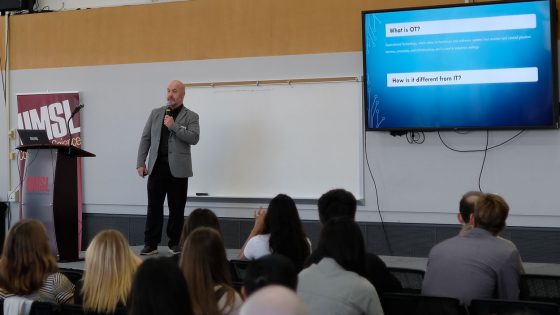
Andy Maine, the director of IT, security and compliance at Hussmann Corporation, discusses cybersecurity threats facing operational technology during STLCyberCon.
Maine is a member of UMSL’s Information Systems and Technology Advisory Board.
“When we’re organizing, either we have set the theme and then asked them to come up with a talk on that theme, or we let them just decide on what the theme is,” Mtibaa said. “When you just give them that freedom, you see that they are going toward what’s going on in the industry.”
This year, that meant a great deal of discussion about artificial intelligence – how it’s being used by cybercriminals looking to access sensitive data, the challenges it creates establishing trust and verification and its uses as a tool for strengthening defenses.
“Whenever a new technology comes in, the first people who use it are crooks,” said Raj Jain, the Barbara J. and Jerome R. Cox, Jr., Professor of Computer Science and Engineering at Washington University in St. Louis, who delivered the conference’s keynote address. “In the last year, when generative AI came in, I started getting about 10 times more spam than I used to get before. Why? Because they don’t have to do anything. They don’t even have to press the keyboard. They can just program an AI.”
As Jain explained, the phishing messages are also getting harder to spot, and the ability to create and deploy deepfakes makes even the most sophisticated users more susceptible to being tricked into turning over sensitive data.
John Khotsyphom, an UMSL alum and manager of security engineering at Netskope, described how he and his colleagues are using Large Language Models and Model Context Protocol to make their security efforts more efficient.
“I use AI to automate the boring stuff,” Khotsyphom said.
He explained that programming and deploying AI tools at more trivial tasks can free up top talent to focus on the most complex problems – architecture, root cause analysis, determining the strategy or the roadmap to secure a particular environment.
Khotsyphom wasn’t the only UMSL graduate among this year’s speakers. Attendees also had a chance to hear from Ashley Richmond, a former Tritons women’s basketball and volleyball player who now serves as the vice president for product management at Mastercard. She and fellow Mastercard Vice President Amar Badrinarayan – an adjunct faculty member at UMSL – presented on AI and managing risk.
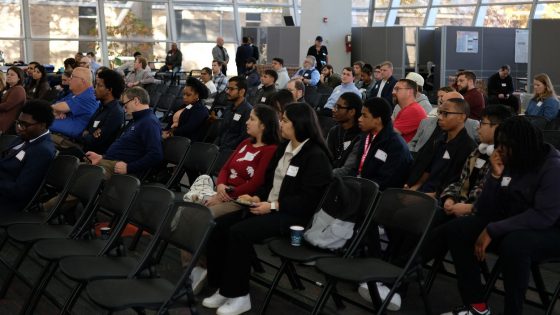
Attendees of STLCyberCon included students, faculty, alumni and practitioners from around the St. Louis region.
Not all the presentations were about artificial intelligence. Andy Maine, the director of IT, security and compliance at Hussmann Corporation, and a member of UMSL’s Information Systems and Technology Advisory Board, discussed the importance of manufacturers protecting operational technology, which has faced increasing threats in recent years.
Kurt Aubuchon, a former UMSL adjunct faculty member and now a senior intelligence analyst at CrowdStrike, walked attendees through a case study on tracking a cybersecurity criminal and the business and ethical issues that play into the decision of whether to out them publicly once they’ve been identified.
There were also talks from Boeing’s Brett Cox on cybersecurity maturity model certification in the defense industrial base and Dave Chronister of Parameter Security on new developments in ransomware.
The conference concluded with an alumni panel featuring recent graduates Joseph Bequette, a security compliance analyst at Fortra; Tyson Hoang, a software engineer at Mastercard who is also enrolled in UMSL’s computer science master’s program in cybersecurity; and Jibril Anifowoshe, a senior cybersecurity engineer at Liberty Mutual Insurance.
They all praised the knowledge and support they received as cybersecurity students at UMSL, whether they were in the computer science or information systems and technology track, and the network and connections they formed as students that continue to serve them in their careers.
UMSL has been training cybersecurity professionals for more than a decade. The National Security Agency and Department of Homeland Security have named the university a National Center of Academic Excellence in Cyber Defense Education.
“We already have nationally ranked programs, but we want to bring them to everyone,” Mirchandani said. “Having this conference enables us to share what we know, as well as the connections we’ve built over the years with the wider St. Louis community.”



